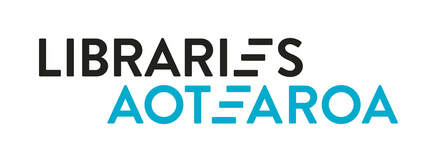The Alexander Turnbull Library outreach services team supports the library’s public events programme. The team includes a field conservator, who advises community groups on care of collections, and two oral history advisors. Vicki-Anne Heikell (Te Whānau-a-Apanui) is the field conservator in the team. She talked to Library Life editor Angie Cairncross about her work and how she loves putting the tools of conservation into the hands of the community.
Mai i taumata ō Apanui ki Pōtaka
Ko Whanokao te maunga
Ko Mōtū te awa
Ko Whakaari te puia
Ko Te Whānau-a-Apanui te iwi
Vicki-Anne Heikell grew up in Gisborne/Tairawhiti on the East Coast. As an undergraduate she had a summer job with the New Zealand Historic Places Trust doing desk research at Antrim House before the Māori heritage team went out onto marae. As she was from the East Coast she got to spend a cool and hot summer at Porourangi Marae, Waiomatatini with the team doing practical stuff like removing old paint layers from poupou and cleaning down. She worked with Cliff Whiting, Jack Fry, Ben Pewhairangi and two conservation students Ben Whiting and Nick Tupara.
| “I’d finished my degree and was thinking about what I was going to do from here. I asked Dean how did you get into this, he said he was studying conservation at Canberra. Funnily, a little while after, I was at home peeling potatoes into a newspaper when I saw a little ad from the Department of Internal Affairs Conservation Advisory Council. They were looking for people to apply to do conservation studies. So I applied.” “It was the scariest interview I’ve ever been in – all these formidable women on the interview panel in a tiny room. Waana Davis, Gelda Te Aue Davis, Ngahuia Te Awekotuku, Jeavons Baillie, Mina McKenzie. But I got the grant and I went to work at Te Papa Tongarewa before beginning the under graduate studies in conservation studies in Canberra (1990-1992). Before I left to study, I was lucky enough to be able to work on Porourangi wharenui in Waiomatatini and Hine Rupe whare in Te Araroa on the East Coast.” “I’d never thought about conservation as a career before that. But as soon as I started working on the whare and in the community, I was sold. And working closely on manuscripts and paper that the tupuna or artist has held - I still feel thrilled.” Vicki-Anne completed her conservation degree and went on to work in the National Preservation Office Te Tari Tohu Taonga. In 1997, wanting to look at what other preservation programmes were being provided for indigenous communities overseas, she applied for and received a Winston Churchill Fellowship. | |
“When you’re working with taonga it’s about keeping yourself safe. I’m always guided by the people I’m working with and who’s taonga I’m working on to see what’s appropriate.”
When asked about her feelings on receiving a New Year’s honour earlier this year she said it really made her think about all the wāhine toa of the library and museum sector.
“I want to acknowledge those wāhine toa of the library sector who nutured and challenged us younger ones as we came through. They worked really hard. They supported and cajoled Māori into the sector and encouraged Māori as users of libraries to get organisations and initiatives up and running. These include Miria Simpson, Ann Reweti, Haneta Pierce, Hinureina Mangan, Meri Mygind, and my contempories who I continue to work with like Ani Pahuru-Huriwai, Cellia Joe Olsen and Hinerangi Himiona.
“Getting awards like an MNZM - I see this as a potential way of elevating important discussions.”
For more information on Vicki-Anne’s work and conservation resources explore the following:
- Caring for taonga - photographs (natlib.govt.nz)
- Caring for your collections – photographs
- Caring for your collections - audio-digitisation
- Caring for your collections – family collections
- Caring for your collections – te reo Māori
- Caring for your collections – Samoan
- A sunrise at mitimiti blog (After Hone Tuwhare)






 RSS Feed
RSS Feed